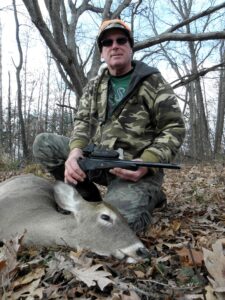A Prescription for Michigan Deer Management
By Glen Wunderlich
Outdoor Columnist
Member Professional Outdoor Media Association
Many states are showing increases in the percentage of adult antlered whitetails harvested over the past few years, but not Michigan. Based on 2008 year-end statistics, Michigan continues to rank among the leaders in the country for killing off potential wallhangers by removing yearling bucks from the herd each season at a disappointing rate of 61 percent of the total antlered buck kill. Add to these depressing figures the anti-motivational 50-percent cost increase in antlerless tags this season and it’s easy to understand why our herd is so out of balance. With all preliminary harvest indicators for 2009’s season pointing down, there’s no reason to believe we will get a grip on effective management strategies without substantial changes in our practices.
Antler restrictions have been remarkably successful elsewhere, where implemented, in balancing the age structure of herds including right here in Michigan. During the years 1999 through 2002, Leelanau County hunters harvested 67 percent yearlings of its total antlered kill. After that, antler restrictions were voted in by hunters and the positive impact has been startling: Yearling buck harvest totals dropped to 38 percent of the buck harvest after rules change with 2.5 year-olds comprising 52 percent of the kill. The harvest of 3.5 year-olds rose from only 6 percent before and by year 2006 rose to 38 percent! Harvest of 4.5 year-old bucks improved from a minuscule 2.5 percent before to over four times that amount afterward. That’s change we can believe in!
Elsewhere in the country, where hunters have enough restraint to pass on yearling bucks, statistics show even more impressive results. Vermont’s hunters harvested 54 percent 2.5 year-old bucks of its total antlered harvest, while Indiana and Tennessee averaged 40 percent 2.5 year-olds. Midwestern states (other than Michigan) showed harvest increases in 3.5 year-olds in the past few years, as well. Of their antlered harvest totals, Mississippi took 58 percent 3.5 year-olds, Arkansas 49 percent, Kansas 49 percent, Louisiana 50 percent, and Texas 54 percent.
These age structure improvements are an important piece of sound herd management practices. So why don’t we learn from these examples? We have the deer; we have the habitat; we have not the leadership to make it work, however. Self-imposed restrictions can help, but unless there is substantial cooperation from sportsmen, it will not be enough. Without fear of bellyachers, without fear of being re-elected, without fear of taking a temporary step backward for future rewards, here is a prescription for success in Michigan.
Impose antler point restrictions throughout the state to a minimum of 4-points on a side.
Only one buck per licensed hunter per season.
Harvesting a button buck fawn ends one’s antlered hunting.
Provide an incentive to harvest more does in high-density areas by reducing fees.
Quality Deer Management (QDM) is proving to work where it has been implemented, but in all honesty, states such as Texas have much larger parcels of land under the control of land managers and that’s why it works so well. In Michigan, we don’t enjoy the privilege of hunting on vast expanses of territory and that’s why new rules should be mandated. Although QDM interest is growing in our state, it is has not been sufficient on its own to have quality results overall. Unless we change what we are doing, we’d be fools to expect different results from the status quo.





